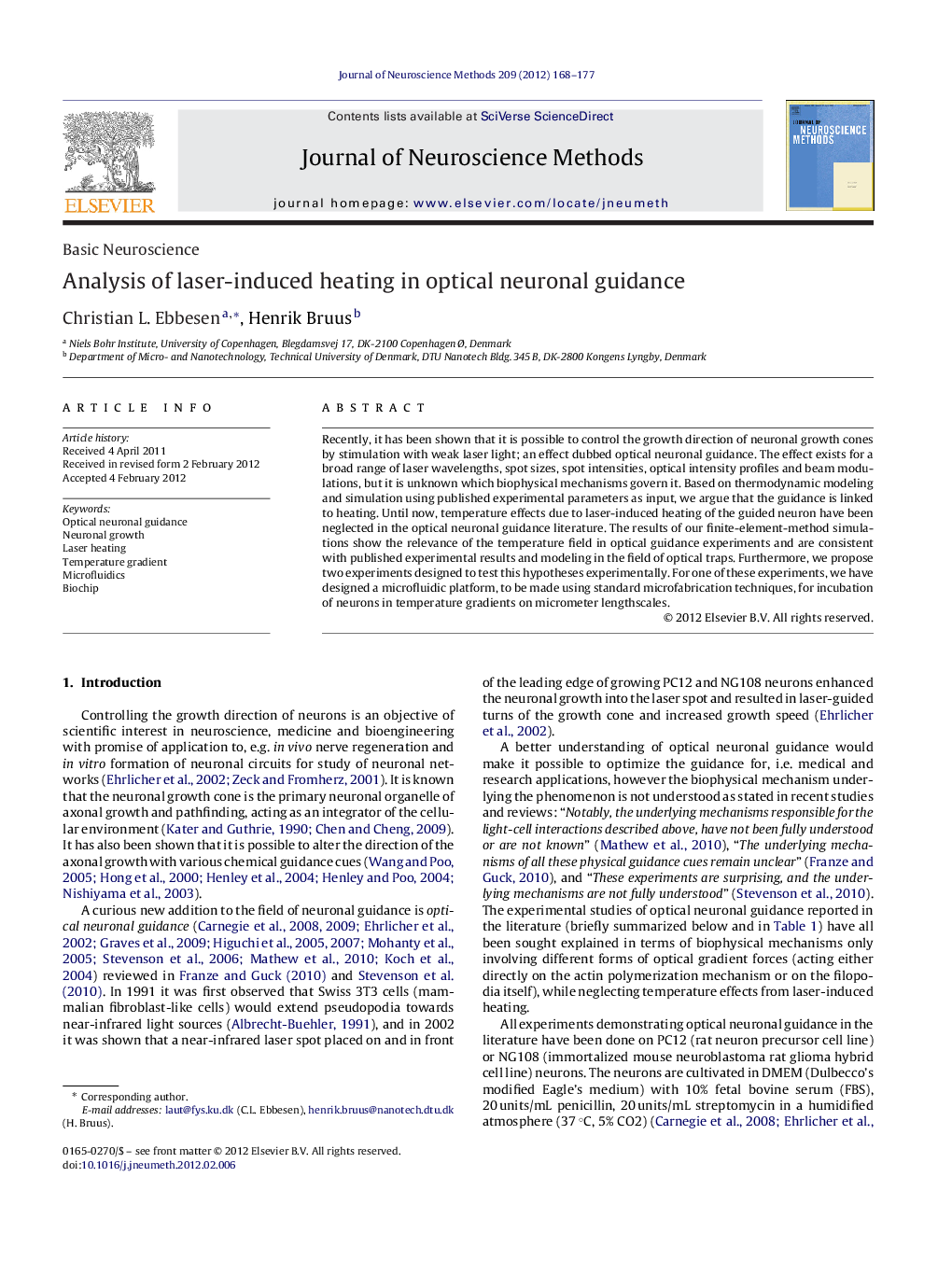| کد مقاله | کد نشریه | سال انتشار | مقاله انگلیسی | نسخه تمام متن |
|---|---|---|---|---|
| 4335085 | 1295121 | 2012 | 10 صفحه PDF | دانلود رایگان |

Recently, it has been shown that it is possible to control the growth direction of neuronal growth cones by stimulation with weak laser light; an effect dubbed optical neuronal guidance. The effect exists for a broad range of laser wavelengths, spot sizes, spot intensities, optical intensity profiles and beam modulations, but it is unknown which biophysical mechanisms govern it. Based on thermodynamic modeling and simulation using published experimental parameters as input, we argue that the guidance is linked to heating. Until now, temperature effects due to laser-induced heating of the guided neuron have been neglected in the optical neuronal guidance literature. The results of our finite-element-method simulations show the relevance of the temperature field in optical guidance experiments and are consistent with published experimental results and modeling in the field of optical traps. Furthermore, we propose two experiments designed to test this hypotheses experimentally. For one of these experiments, we have designed a microfluidic platform, to be made using standard microfabrication techniques, for incubation of neurons in temperature gradients on micrometer lengthscales.
► Biophysics of optical neuronal guidance not understood.
► Localized laser heating effects hitherto neglected in the literature.
► New thermodynamic model predicts biologically significant laser-induced heating with temperature gradients ∼1 °C/10 μM.
► New Hypothesis: Guidance is mediated by heat-activation of TRP channels.
► New design proposed for a microfluidic platform for testing heat-mediated neuronal guidance.
Journal: Journal of Neuroscience Methods - Volume 209, Issue 1, 30 July 2012, Pages 168–177